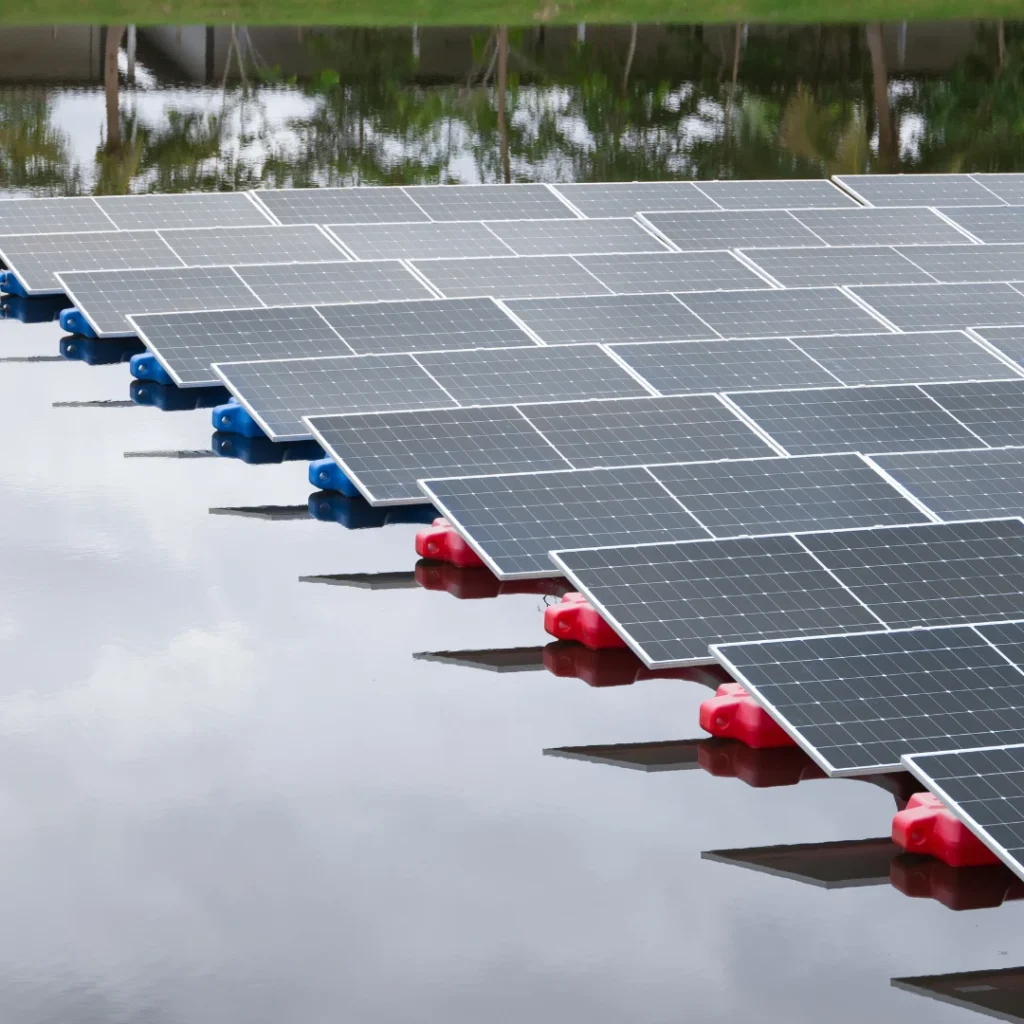As the global demand for clean and sustainable power surges, the renewable energy sector continues to explore innovative solutions to meet the world’s growing needs. One of the most exciting and rapidly emerging technologies in 2025 is floating solar farms — a new frontier in renewable energy that is gaining momentum across the globe.
Floating solar farms, also known as floating photovoltaic (FPV) systems, are solar power installations mounted on floating structures over bodies of water such as lakes, reservoirs, and even seas. These systems represent a smart fusion of technology and environmental awareness, and in 2025, they are playing a major role in transforming the landscape of renewable energy.

Why Floating Solar Farms?
The push for renewable energy is stronger than ever, but traditional solar farms require vast stretches of land — a resource that is often limited or expensive. Floating solar farms solve this problem by utilizing underused water surfaces, particularly in urban or agricultural areas where land is scarce. By placing solar panels on water, these systems help save valuable land while simultaneously reducing water evaporation — a dual benefit for countries facing both energy and water scarcity.
In 2025, more governments and private sectors are investing in floating solar technology due to its efficiency. The water beneath the panels helps keep them cool, improving their performance and lifespan. Studies show that floating solar panels can produce up to 15% more electricity than land-based systems, making them a competitive player in the renewable energy race.
Global Adoption and Growth
Countries like India, China, Japan, and the Netherlands are leading the way in floating solar installations. In India, large reservoirs in states like Maharashtra and Kerala are now home to expansive floating solar farms, contributing significantly to the nation’s renewable energy goals. China, which already leads in solar capacity, is investing heavily in FPV systems on disused coal mining sites, turning environmental liabilities into clean power hubs.
As of 2025, global floating solar capacity has crossed several gigawatts, and the trend shows no sign of slowing. With technological advancements, the cost of installation has decreased, making it a more accessible option even for smaller countries looking to improve their renewable energy footprint.
Environmental Benefits
Apart from generating clean energy, floating solar farms also provide environmental benefits. They reduce algae growth by blocking sunlight from penetrating water bodies, thereby helping maintain aquatic ecosystems. Additionally, by reducing evaporation, they help preserve water levels in reservoirs used for drinking water or irrigation.
Floating solar is a shining example of how renewable energy solutions can be designed with environmental sustainability in mind. In 2025, it is increasingly being seen not just as an energy project but as a multi-functional environmental innovation.
Challenges to Overcome
Despite the many advantages, floating solar farms face some challenges. Installation and maintenance in aquatic environments can be complex and costly. There are also concerns about the long-term impact on aquatic life and water quality. However, continuous research and pilot projects are addressing these issues, making the technology more viable for widespread adoption.
Moreover, with climate change driving unpredictable weather patterns, floating systems must be resilient to storms, waves, and fluctuating water levels. Yet, advancements in anchoring technologies and durable floating structures are making these systems more reliable and adaptable in 2025.
The Future is Floating
The growth of floating solar farms represents a broader trend in the evolution of renewable energy — one that prioritizes innovation, efficiency, and environmental balance. As nations race to meet climate targets and reduce carbon footprints, floating solar is becoming a symbol of progress in the renewable energy revolution.
In conclusion, 2025 marks a turning point where floating solar farms are no longer just experimental projects but central to renewable energy strategies across the world. They are proving that when innovation meets sustainability, the possibilities for clean power are boundless.
As we move toward a greener future, floating solar farms offer a promising path — not just floating on water, but rising as a wave of change in the world of renewable energy.
